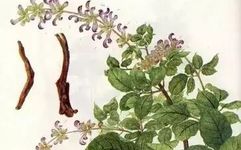Herb Name: Dan Shen (Salvia miltiorrhiza)
Alias: Hong Dan Shen (Red Dan Shen), Zi Dan Shen (Purple Dan Shen), Qie Chan Cao (Qie Chan Herb)
Harvesting and Processing: Harvest in spring and autumn, remove soil and sand, and dry.
Medicinal Parts: Roots and rhizomes
Origin: Sichuan
Family: Lamiaceae
Original Plant: Salvia miltiorrhiza
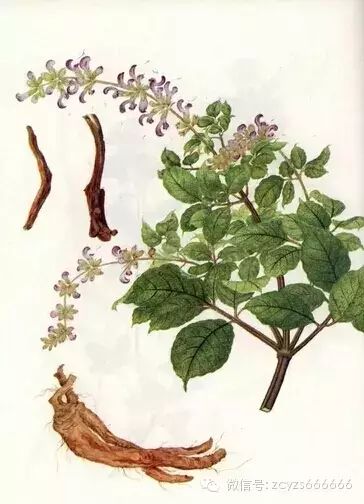
A perennial herb, 30-80 cm tall, densely covered with yellowish-white soft hairs and glandular hairs. The roots are slender and cylindrical, with a reddish-brown outer skin. The stem is erect, square, and has shallow grooves on the surface.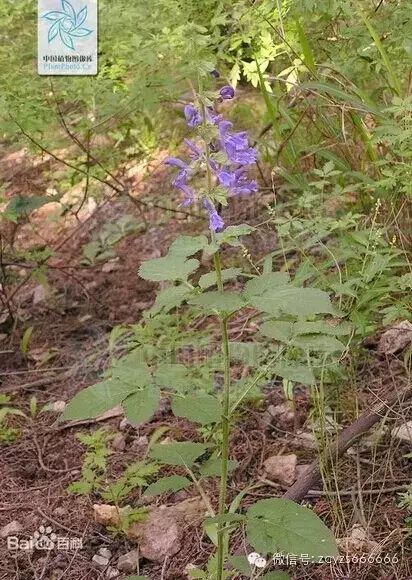
Leaves are odd-pinnate, opposite, with petioles; leaflets 3-5, rarely 7, with the terminal leaflet being the largest and the petiole of the terminal leaflet being the longest; lateral leaflets may have short petioles or none; leaflets are ovate or broadly lanceolate, 2-7.5 cm long, 0.8-5 cm wide, with acute or gradually pointed tips, and bases that are obliquely rounded, broadly wedge-shaped, or nearly heart-shaped, with serrated edges. The upper surface is dark green, sparsely covered with white soft hairs, while the underside is gray-green, densely covered with long white hairs, especially on the veins.
The inflorescence is a raceme, terminal or axillary, 10-20 cm long; flowers are whorled, with 3-10 flowers per whorl, and bracts are lanceolate, about 4 mm long; the calyx is purplish, bell-shaped, 1-1.3 cm long, with a bilabiate apex, the upper lip is broadly triangular with an acute tip, and the lower lip is triangular with two acute lobes; the corolla is blue-purple, bilabiate, about 2.5 cm long, with the upper lip slightly curved and the lower lip shorter and rounded, with three lobes, the central lobe being longer and larger, with two shallow lobes at the tip; there are 2 developed stamens, with filaments cylindrical and anthers linear, extending beyond the corolla, and 2 rudimentary stamens with anthers degenerated into petal-like structures; the ovary is superior, deeply 4-lobed, with the style extending beyond the corolla and the stigma bifid, purplish. Flowering period is from May to August.

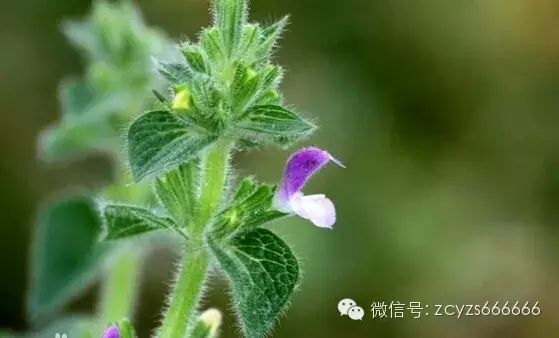
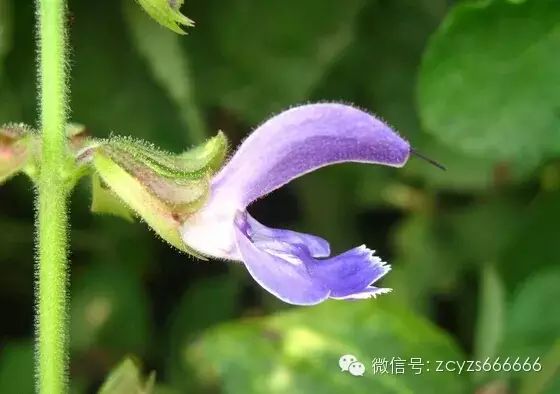
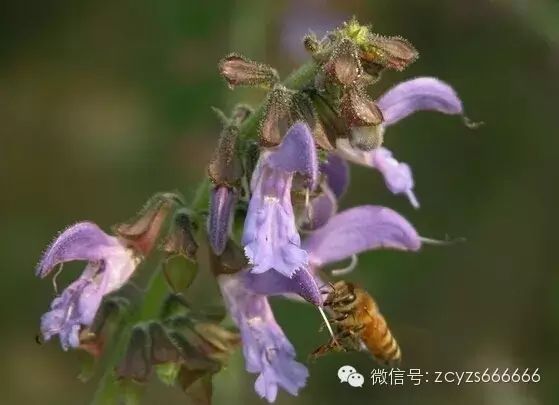 Small nuts are 4, oval, black, about 3 mm long. Fruiting period is from August to September.
Small nuts are 4, oval, black, about 3 mm long. Fruiting period is from August to September.
Characteristics of Dan Shen slices: The roots and rhizomes are short and thick, sometimes with remnants of the stem base at the top. The roots are several, elongated cylindrical, slightly curved, some branched with fibrous roots, 10-20 cm long, and 0.3-1 cm in diameter. The surface is reddish-brown or dark reddish-brown, rough, with longitudinal wrinkles. The outer skin of old roots is loose, often showing a purplish-brown color, and tends to flake off in a scaly manner. The texture is hard and brittle, with a loose fracture surface that may have cracks or be slightly smooth and dense; the bark is reddish-brown, and the wood part is gray-yellow or purplish-brown, with vascular bundles arranged radially. The aroma is faint, and the taste is slightly bitter. Cultivated varieties are sturdier, with a diameter of 0.5-1.5 cm. The surface is reddish-brown, with longitudinal wrinkles, and the outer skin is tightly adhered and not easily peeled off. The texture is solid, with a relatively smooth fracture surface, slightly horn-like.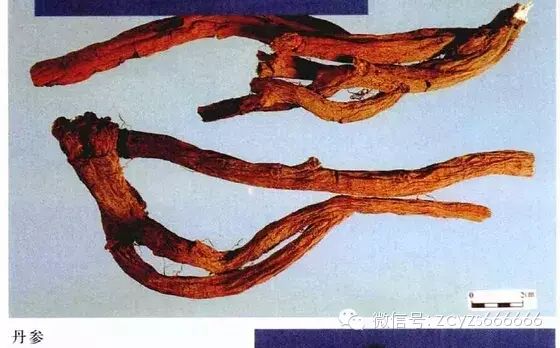

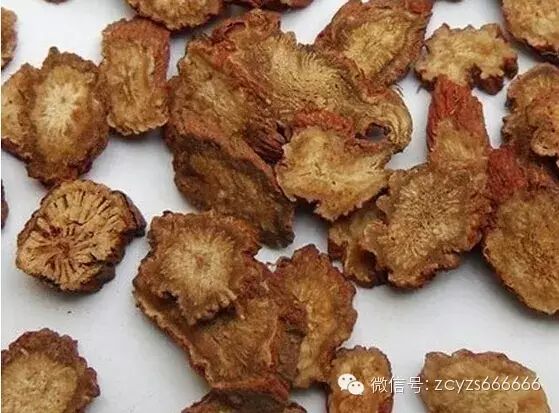 High-quality products are characterized by thick roots, purple-black interior, and the presence of chrysanthemum-like white spots.
High-quality products are characterized by thick roots, purple-black interior, and the presence of chrysanthemum-like white spots.
Pharmacological Properties of Dan Shen:
[Shennong’s Herbal Classic, Superior Grade] Dan Shen has a bitter and slightly cold taste. It is indicated for evil qi in the heart and abdomen, with gurgling sounds in the intestines like flowing water, accumulation of cold and heat, breaking stagnation and removing masses, alleviating fullness and benefiting qi. Qie Chan Cao.
It has a bitter taste, neutral qi, and enters the liver meridian (Jueyin). It promotes blood circulation, breaks blood stasis, regulates menstruation, and treats masses and pain. It is effective for excessive menstrual bleeding and leukorrhea.
Dan Shen grinds and breaks stagnation, effectively promoting blood stasis without harming new blood, and is an essential herb for meridian and childbirth. It treats all types of abscesses, sores, goiters, and skin diseases. The Ben Cao states that it breaks old blood, generates new blood, stabilizes pregnancy, expels dead fetus, and unblocks blood vessels, treating leg and knee weakness, and is excellent for promoting blood circulation.
[Preparation] Jiu Dan Shen: Take Dan Shen slices and stir-fry with wine according to the wine-frying method (Appendix II D).
[Properties] Bitter, slightly cold.
[Meridian Entry] Enters the heart and liver meridians.
[Functions and Indications] Invigorates blood, alleviates pain, promotes blood circulation, and clears the heart to relieve irritability. Used for irregular menstruation, dysmenorrhea, masses, stabbing pain in the chest and abdomen, painful heat bi syndrome, sore and swollen sores, irritability and insomnia; liver and spleen enlargement, and angina pectoris.
[Dosage] 9-15 g.
[Precautions] Should not be used with Li Lu.
[Storage] Keep in a dry place.

